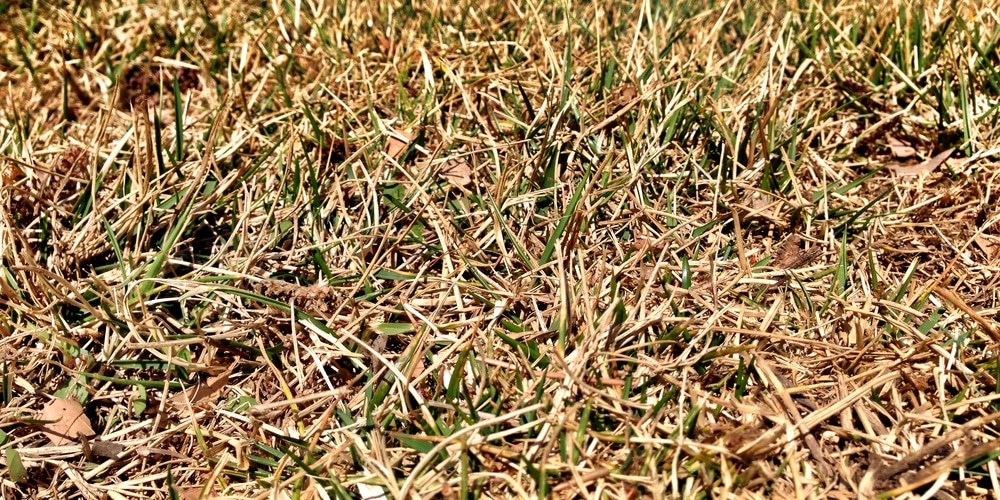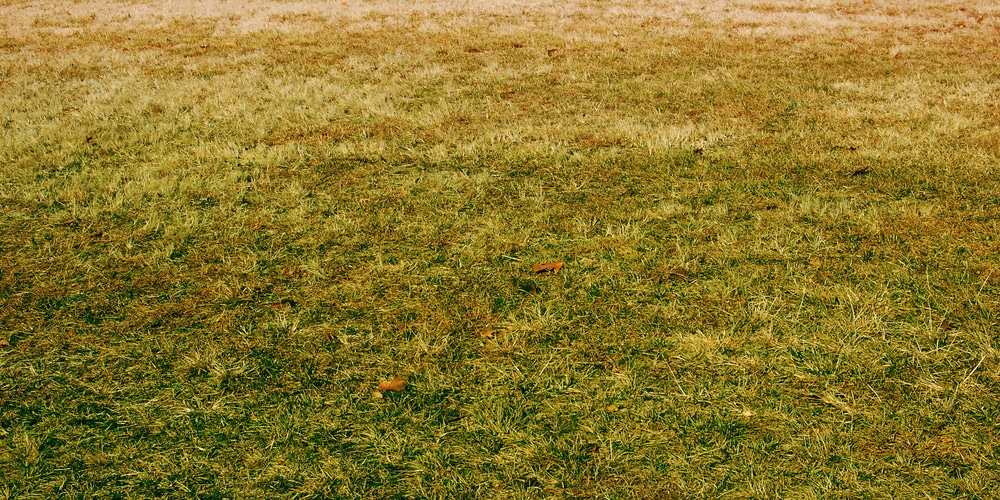Fescue grass is a relatively low-maintenance lawn that adapts to various soil conditions and climates. While taking care of your grass doesn’t have to involve anything out of this world, it requires you to pay attention to its needs.
But even with proper care, sometimes your fescue might turn yellow in the winter, decreasing the aesthetic appeal of your garden. Why does this happen? And is it normal? Keep reading to find an answer to all of these questions and clear your doubts once and for all.
Why Does Fescue Turn Yellow in the Winter?

Fescue is a cool-season grass that does better at low temperatures. However, that doesn’t mean it thrives in the winter. Indeed, this grass species thrives at temperatures between 60 and 80°F.
Still, while heat damage might be worse than cold, frost might cause your fescue grass to turn yellow. Indeed, as the moisture trapped in the lawn freezes, the cells at the tip of the lawn’s blades break, causing the grass to turn yellow.
Additionally, during the winter, fescue goes into dormancy, which causes it to slow its growth rate. For some, that might sound like good news since it means you won’t have to worry too much about mowing during this period. However, as the temperatures lower, photosynthesis gradually stops, which might turn the grass yellow. And that might not be as appealing.
Still, you can prevent that by applying a high-quality starter fertilizer during the fall. Remember to choose a one high in phosphorous and potassium: they are essential elements in cell and root development.
Overall, if your grass turns yellow in the winter, you shouldn’t worry too much about it. It is usually a natural reaction due to the climate getting colder. However, it might indicate that your lawn is low on essential nutrients. Indeed, healthy grass shouldn’t turn yellow.
What Else Might Cause Your Lawn To Turn Yellow?
Your fescue grass might also turn yellow due to fungal infections, which usually result from overwatering. To prevent their formation, ensure you plant your grass in well-draining soil.
Also, yellowing might appear only in patches and attack those areas of your lawn that do not receive the full sun. Again, this might be a symptom of fungal infection, which you should take care of by adjusting your watering schedule.
Also, don’t forget to make the necessary amendments to the soil to increase drainage. If the substrate in your garden is too compact, consider adding some sand.
During the hot months of the summer, your grass might turn yellow due to underwatering. As fescue thrives at lower temperatures, the heat might stress it to the point of causing discoloration. Consider increasing the watering frequency during the summer.
Other reasons that might cause your fescue lawn to turn yellow include iron and manganese deficiency.
Such a condition may occur in summer or winter (temperatures do not affect it) and, over time, might cause your grass’ death. If you notice the grass leaves curling and the blade thinning, your soil might be poor in nutrients.
You can use organic compost or manure to increase the levels of nutrients in the substrate. Alternatively, you can try adding a suitable fertilizer.
What Can You Do To Prevent Your Lawn From Turning Yellow?
The best thing you can do is to keep your lawn healthy. Indeed, strong grasses are less susceptible to diseases and won’t usually turn yellow. Plant your fescue under the full sun (or partial shade) and well-draining soil.
Such conditions are crucial to its healthy growth. Too much shade might gradually turn your lawn yellow and cause uneven development, which might look unappealing.
If your lawn turns yellow in patches, the cause might be the dog’s urine. If you have a dog, consider using a urine neutralizer or have your dog doing its business somewhere else.
Related article: Does Fescue Grow in Shade?
